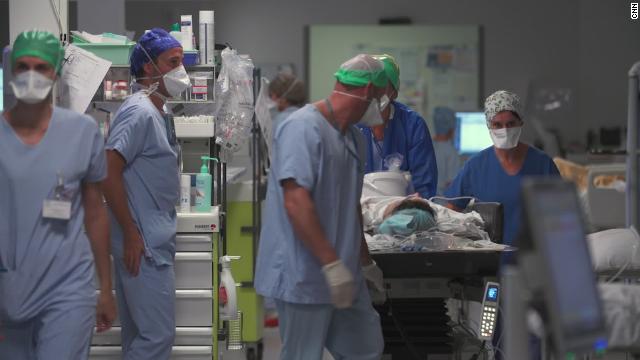
CDC Transmission electron microscopic image of an isolate from the first U.S. case of COVID-19, formerly known as 2019-nCoV. The spherical viral particles, colorized blue, contain cross-section through the viral genome, seen as black dots.
An additional 83 people tested positive for the coronavirus in Allegheny County, Pennsylvania as of midnight September 17, and an additional person died, according to the latest data from the state Department of Health.
Statewide, the total number of positive cases reached 147,923 and 7,913 deaths have been attributed to COVID-19. Philadelphia County also reported an increase of 83 cases, Centre County reported an increase of 88 cases, and York County reported an increase of 24 cases in the same time period, according to the Department of Health data.
A total of 1,721,275 negative test results have been reported to the state Department of Health to date. Between September 10 and September 16, there were 176,997 tests were administered with 5,700 positive cases and a total of 24,529 test results reported to the department as of 10 p.m. September 16.
Here’s what you need to know:
COVID-19 Cases Among 19 to 24 Year Olds Account for 29% of Coronavirus Cases in the Southwest Region of Pennsylvania
The southwest region of Pennsylvania, which includes Allegheny County, has seen a substantial increase in COVID-19 cases among 19 to 24 year olds, according to a statement provided to Heavy. In April, young adults in that age group accounted for 5% of cases of the coronavirus, and they now account for 29% of the cases so far in September. The trend is reflected statewide, leading Department of Health Secretary Dr. Rachel Levine to emphasize the importance of wearing masks and social distancing.
“We know that congregation, especially in college and university settings, yields increased case counts. The mitigation efforts in place now are essential to flattening the curve and saving lives,” she said. “Wearing a mask, practicing social distancing, and following the requirements set forth in the orders for bars and restaurants, gatherings, and telework will help keep our case counts low. Together, as Pennsylvanians, all of our efforts are designed to support our communities to ensure that cases of COVID-19 remain low.”
More cases have been reported among young adults than adults ages 50 to 64 and 65 and older. Statewide, 12% of positive tests were reported in the 19 to 24 age group, 36% of positive cases are in patients ages 25 to 49, and 22% are in patients ages 50 to 64 and patients 65 and older. About 7% of COVID-19 patients are 0 to 18 years old.
The Department of Health released the increase among young adults in a breakdown by region:
North Central: About 7% of cases in April to 71% of cases so far in September;
Southeast: Nearly 5% of cases in April to nearly 32% of cases so far in September;
Northeast: 6% of cases in April to nearly 39% of cases so far in September;
Southwest: About 5% of cases in April to nearly 29% of cases so far in September;
Northwest: Nearly 7% of cases in April to nearly 20% of cases so far in September; and
South Central: About 7% of cases in April to nearly 17% of cases so far in September.
Pennsylvania Governor Tom Wolf Signed an Order Allowing Restaurants to Increase Indoor Dining Capacity to 50% & Mandating Alcohol Sales End at 11 p.m.
Gov. Tom Wolf signed an order September 17 that will allow restaurants to increase indoor dining capacity to 50% beginning September 21. Restaurants were initially permitted to operate their indoor dining facilities at 50% capacity as regions entered the green phase of the state’s COVID-19 mitigation efforts. Pennsylvania saw a surge in cases, and Wolf announced that restaurants must abruptly cut their indoor dining facilities to 25% capacity. As a part of the new order, alcohol sales must also end at 11 p.m. beginning September 21. This is a change from his announcement of the order, in which he said alcohol sales would end at 10 p.m.
“As we continue to take critical steps to continue to mitigate the spread of COVID-19, we also recognize that this pandemic has taken a significant toll on the food services industry, so we must balance public health and economic recovery,” Wolf said in a statement provided to Heavy. “These orders give restaurants the ability to increase indoor occupancy safely while giving customers confidence when deciding to patronize a restaurant.”
Restaurant owners must complete a self-certification process to increase their indoor dining capacity. The online certification process must be completed by October 5. The self-certification is a part of the Open & Certified Pennsylvania program. Restaurant owners who complete the self-certification process will appear in an online database and receive documents notifying customers of their certification status, which they can display on their windows. Customers can also search online for certified restaurants.
READ NEXT: Howard Baskin, Tiger King Carole Baskin’s Husband: 5 Fast Facts


